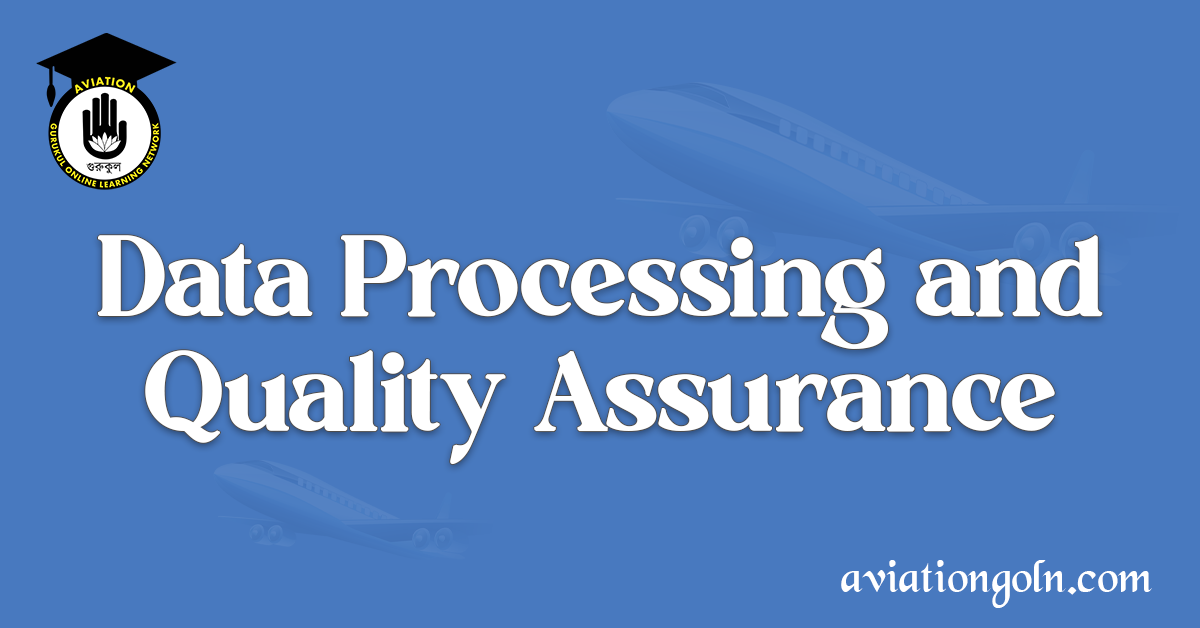Data Processing and Quality Assurance: The aviation industry is characterized by its dependency on precise, reliable data. Aeronautical Information Service (AIS) plays a pivotal role in ensuring that accurate aeronautical data and information are made available to all concerned users at the right time. Effective data processing and quality assurance are at the heart of AIS, guaranteeing that air navigation is both safe and efficient.
Data Processing and Quality Assurance: Data Management in Aeronautical Information Service
1. The Importance of Aeronautical Information Service (AIS)
Before diving into data management, it’s vital to understand the AIS’s role in aviation. AIS provides critical information for the safe, regular, and efficient movement of aircraft. This information ranges from data on physical and operational characteristics of aerodromes, airspace structure, routes, and obstacles, to regulations and procedures related to flight operations.

2. Data Processing in AIS
2.1 Data Collection
The initial step in the data processing cycle is data collection. Data is primarily gathered from:
- Aerodrome operators
- Airspace users
- Air traffic services
- Survey services
- Meteorological services
2.2 Data Verification
Once data is collected, it undergoes a rigorous verification process to confirm its accuracy and relevance. AIS personnel typically collaborate with original data providers or relevant aviation authorities during this phase.
2.3 Data Formatting and Codification
After verification, data is formatted according to international standards set by organizations like the International Civil Aviation Organization (ICAO). This ensures that the data can be universally understood and accessed across different AIS systems and by all aviation stakeholders.
2.4 Data Storage
AIS systems use specialized databases to store aeronautical information. These databases are optimized for rapid retrieval and update of information to ensure timely and efficient data distribution.

3. Quality Assurance in AIS Data Management
3.1 Defining Quality in AIS
Quality in AIS refers to the degree to which aeronautical data and its processing meet the required standards, primarily accuracy, resolution, integrity, and timeliness.
3.2 Quality Control (QC)
QC involves routine processes and checks integrated into the AIS data processing cycle. Its aim is to detect and rectify errors or inconsistencies in the data. It includes activities such as:
- Data verification checks
- Regular system audits
- Calibration of equipment
- Training of AIS personnel

3.3 Quality Monitoring
This continuous process ensures that the aeronautical data disseminated adheres to the established quality standards. Monitoring tools track changes, updates, or anomalies in the data.
3.4 Feedback and Improvement
Feedback mechanisms are integrated to gather inputs from end-users, such as pilots or air traffic controllers, regarding potential discrepancies or improvements. These inputs are crucial for continuous quality improvement.

4. Challenges in AIS Data Management
4.1 Volume of Data
The sheer amount of aeronautical data that needs processing has increased exponentially due to the rise in global air traffic and the introduction of new routes and aerodromes.
4.2 Technological Upgrades
The transition from traditional AIS to Aeronautical Information Management (AIM), which focuses on digital data and its management, presents a challenge in integrating and updating systems and training personnel.
4.3 Global Interoperability
Ensuring global consistency and interoperability of data across countries and regions is challenging due to varying technological capabilities and adherence to standards.

5. The Future: Moving from AIS to Aeronautical Information Management (AIM)
AIM focuses on managing aeronautical information and data, emphasizing digital data exchange and integration with other aviation systems. The transition from AIS to AIM is a pivotal shift towards a more integrated and digital aviation system.
5.1 Benefits of AIM
- Improved Data Exchange: Digital data allows for seamless, real-time exchange between systems and stakeholders.
- Enhanced Safety: Real-time data updates and higher quality assurance standards contribute to safer air navigation.
- Operational Efficiency: Digital data management streamlines operations, reducing delays and enhancing overall air traffic management.

Data processing and quality assurance in AIS are paramount to ensuring safety and efficiency in the aviation sector. As the industry evolves with technological advancements, so too must the systems that manage and guarantee the quality of aeronautical data. The transition to AIM highlights the industry’s commitment to leveraging technology for a safer, more efficient future in air navigation.
Given the critical nature of aeronautical information, it’s imperative that stringent quality assurance processes are always in place and evolving in tandem with technological advancements. The future of aviation rests significantly on the accuracy and reliability of its data.
